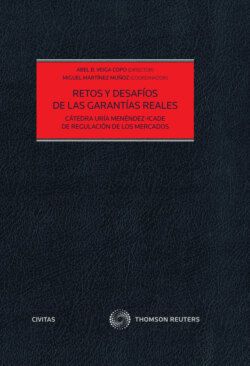Читать книгу Retos y desafíos de las garantías reales - Abel B. Veiga Copo - Страница 53
II. Data set
ОглавлениеThe data set analysed in this study is based on a questionnaire developed by the Capital Markets Union Unit of the European Commission7. The European Commission cooperated with the Member States in the development of the questionnaire. The questionnaire is directed at the Member States themselves. It contains 105 questions and requires qualitative and quantitative answers. The qualitative questions ask for either a “Yes”/“No” answer or provide the opportunity for a free text answer. The large majority of questions are qualitative questions requiring a “Yes”/“No” answer (96 out of 105). The questionnaire is designed such that a “Yes” answer is desirable from the perspective of the bank and signals enforcement support, while a “No” answer denotes no support for enforcement.
The questionnaire follows a three-level-structure. The first level distinguishes between the following types of debtors:
(1) Corporate (legal entity),
(2) Entrepreneurs (sole trader/partnership) and
(3) Consumers.
The second level distinguishes whether security is present:
(1) Secured (specific rules) or
(2) Unsecured (general rules).
The third level differentiates whether the enforcement is individual or collective:
(1) Individual enforcement or
(2) Insolvency proceedings.
Here are three example questions to illustrate the questionnaire: Question 1.2.2 concerns corporate debtors, secured loans and individual enforcement and reads “Private sale allowed at creditor’s discretion (public auction optional) as regards movable collateral?”. Question 2.18 concerns entrepreneurs (sole trader/partnership), unsecured loans and insolvency proceedings and asks “Creditors entitled to request insolvency proceedings to be commenced?”. Question 3.22 aims at consumers, unsecured loans and insolvency proceedings and reads “Court capacity (measured in clearance rates incoming/resolved cases)”.
All 28 Member States answered the questionnaire. In collecting answers, the ministries of finance were the point of contact for the European Commission. In some Member States, the questionnaire was forwarded to other institutions for guidance such as ministries of justice, supreme courts and state agencies. The answers were received in the period starting 7 September 2018 and ending 15 October 2019. There was opportunity to clarify the understanding of the questionnaire and to update answers.
Following the request of the European Commission, the study has been entirely anonymised. The names of countries have been replaced by randomised placeholders and are displayed as “MS1, MS2, MS3, …, MS 28”. To prevent identification by way of patterns, all Member States were assigned a new placeholder in each chart and section.
